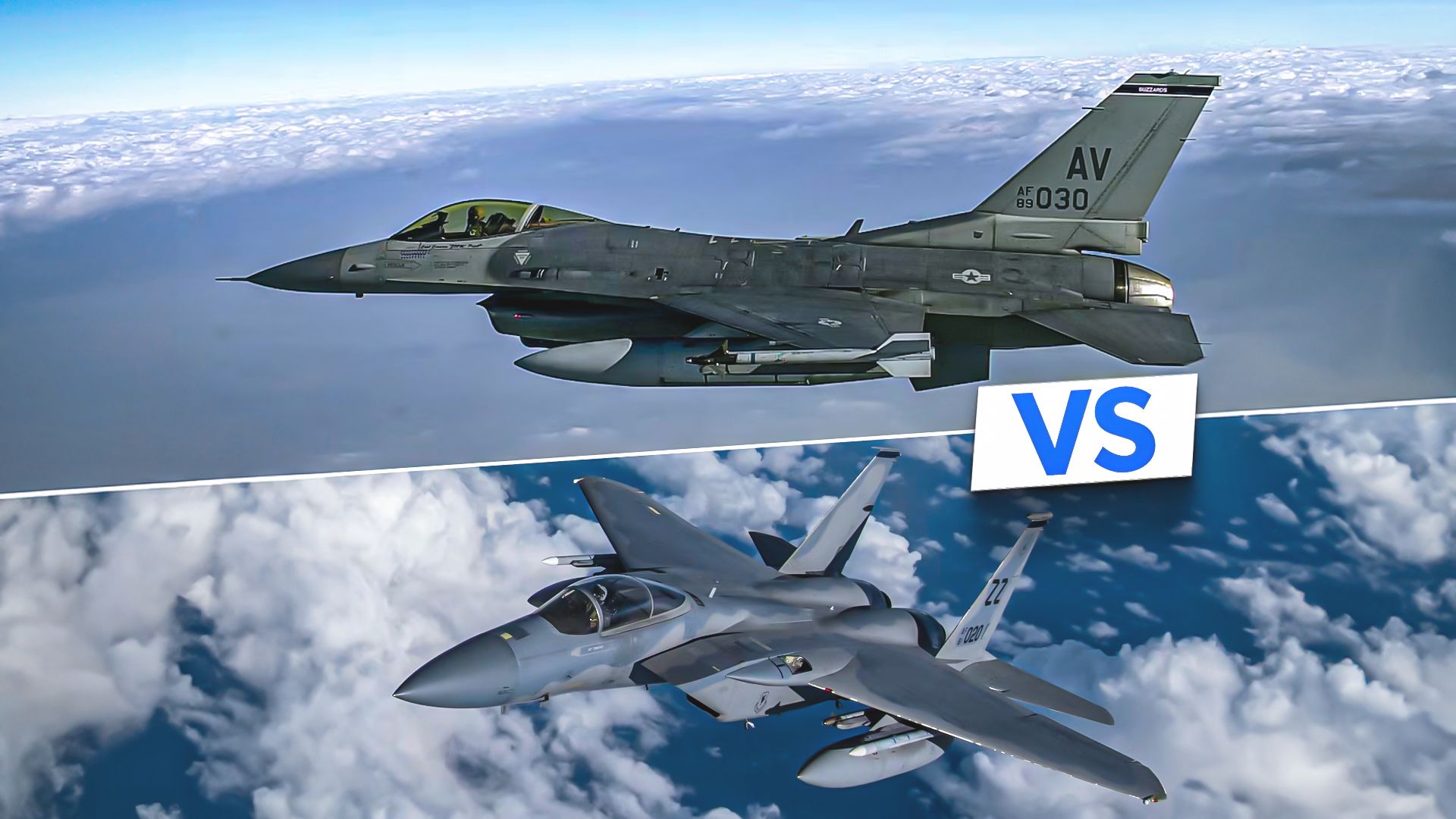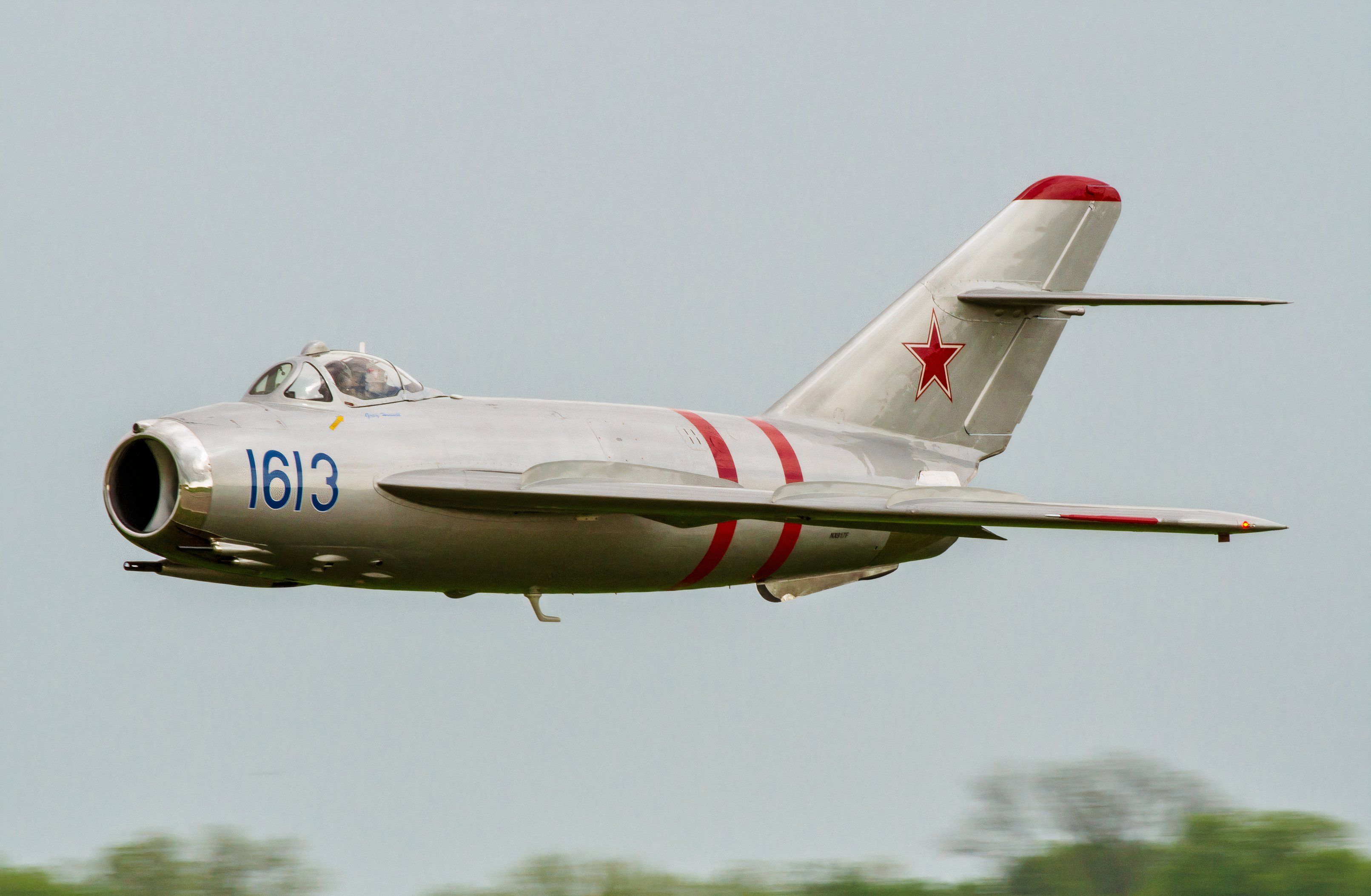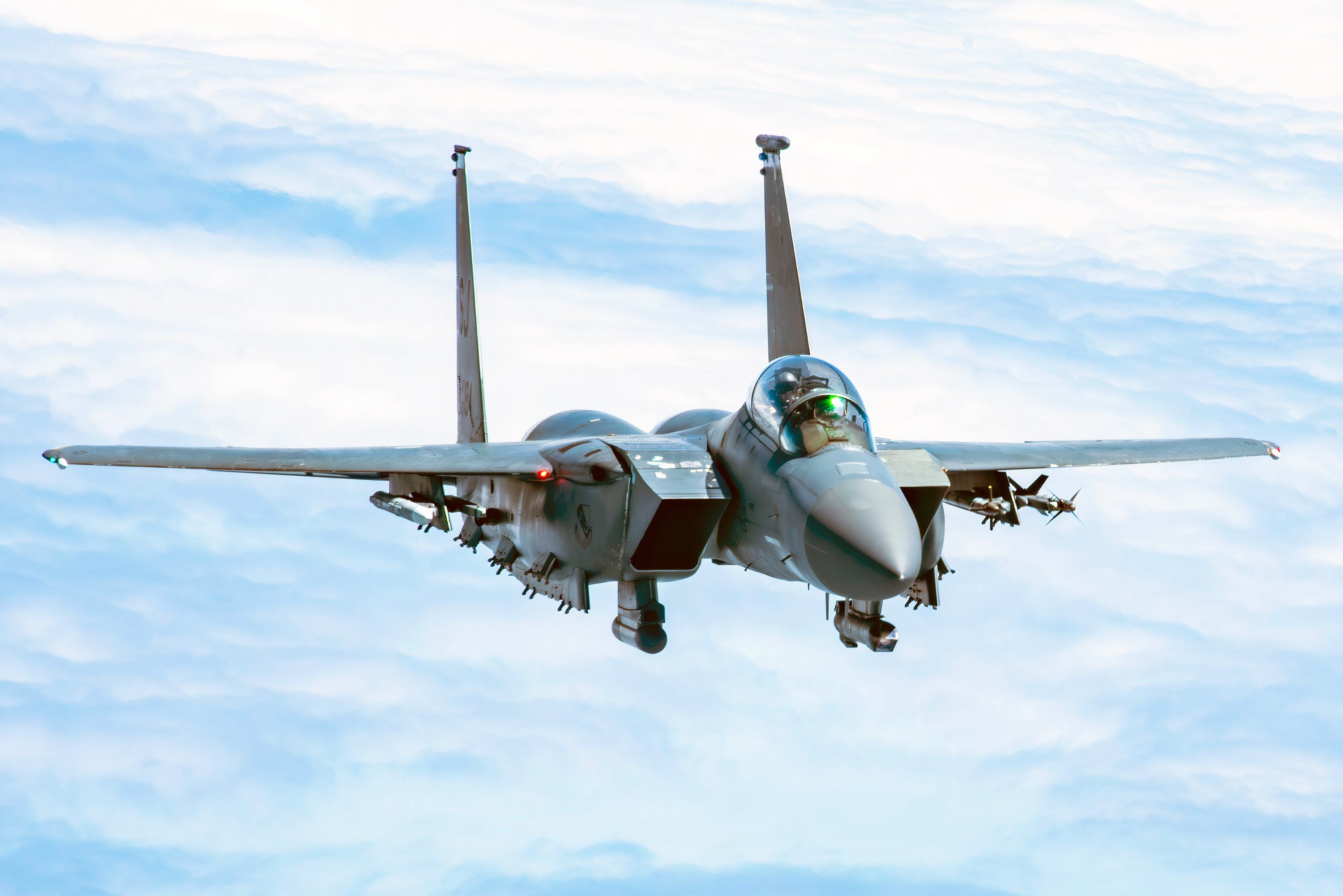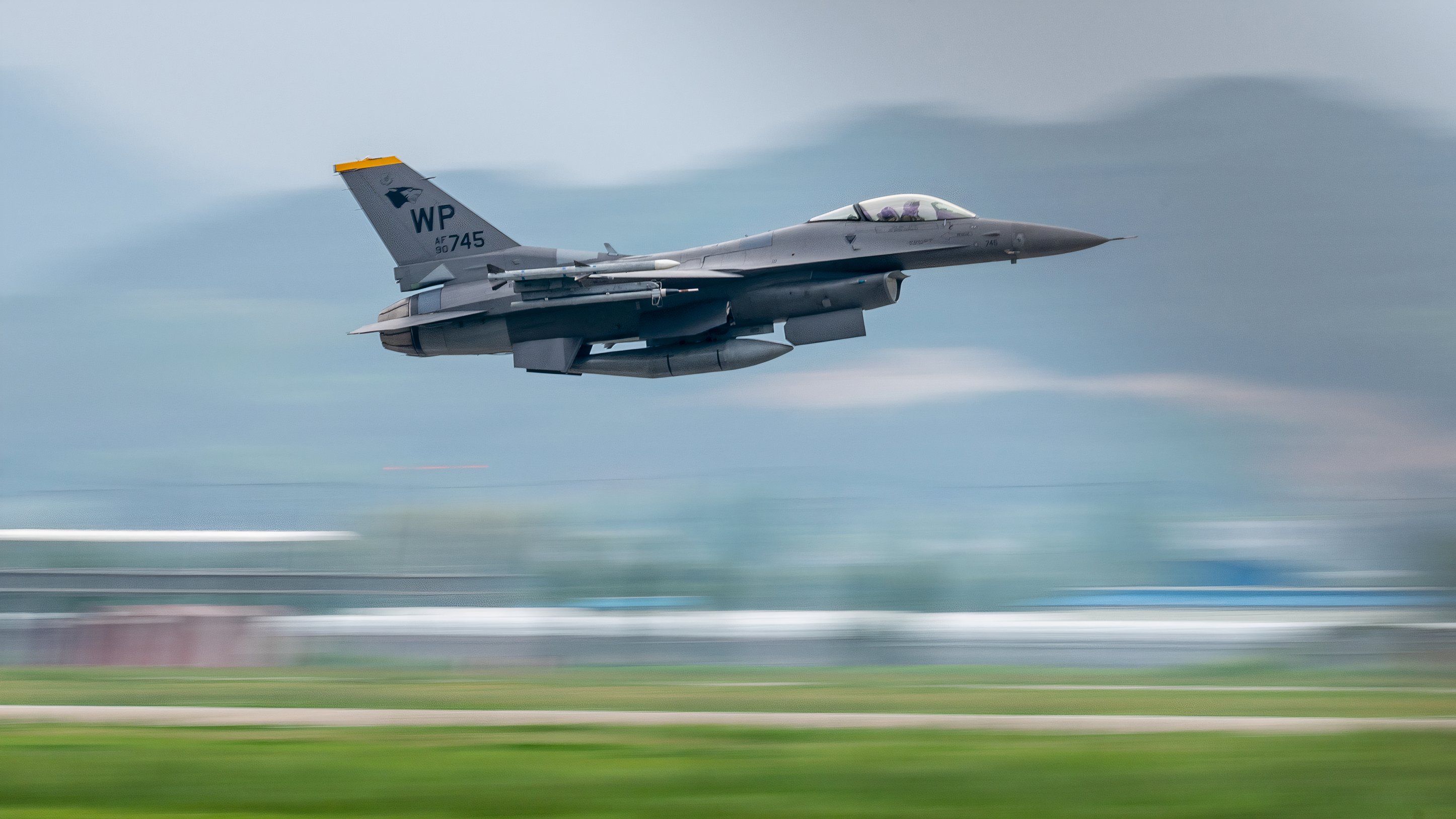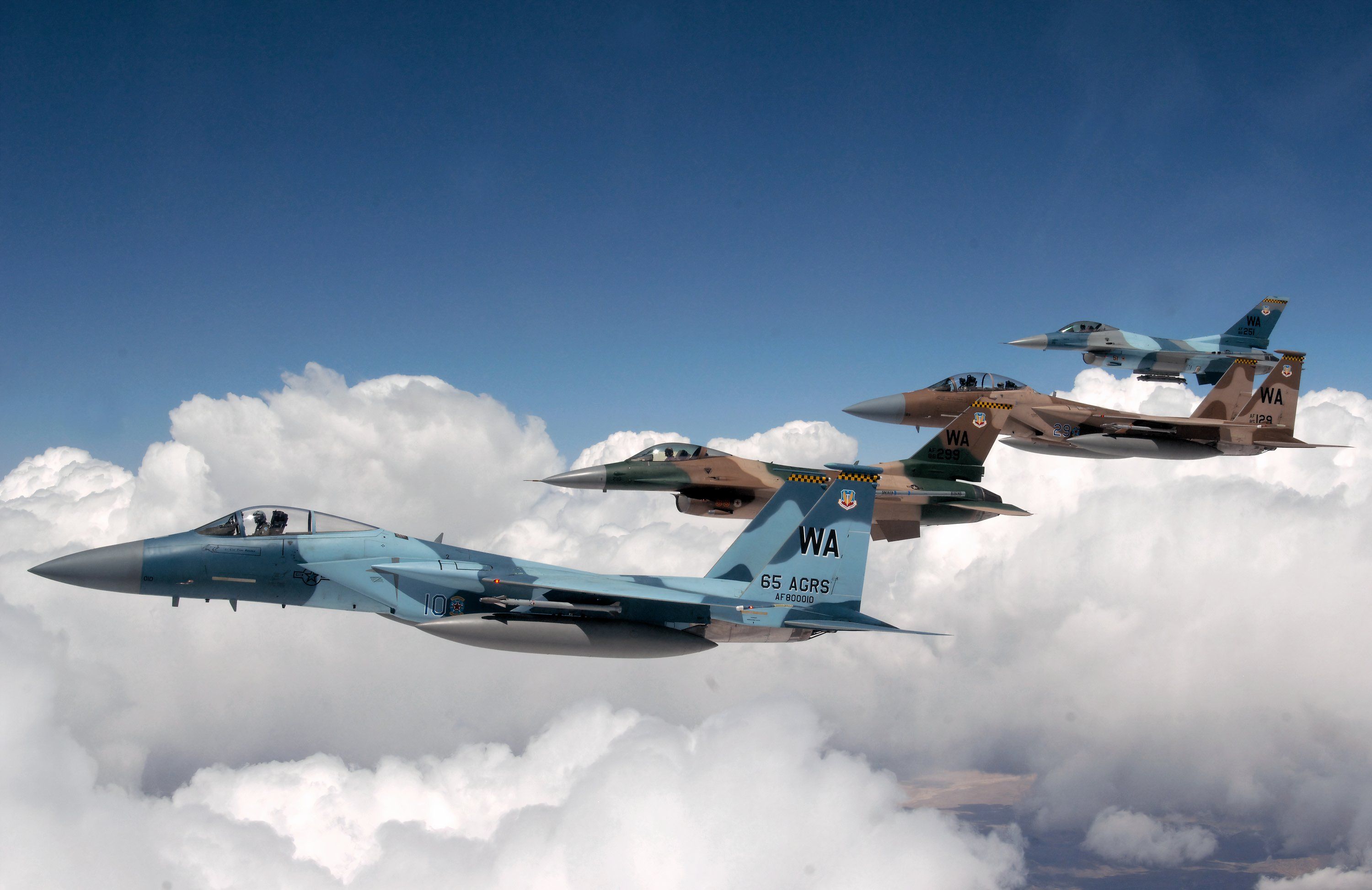Summary
- F-15 focuses on speed, while F-16 prioritizes maneuverability, leading to distinct combat advantages.
- F-16 entered service in 1978, establishing itself as a benchmark in jet fighter performance.
- F-15 boasts over 100 kills without a loss in dogfights, a feat that F-16 has yet to achieve.
While it is true that both the McDonnell Douglas F-15 Eagle and the General Dynamics F-16 Fighting Falcon are exceptional fourth-generation air superiority fighters, is there one plane that is better than the other? Of the two American aircraft, the McDonnell Douglas F-15 Eagle is slightly older, having entered service with the United States Air Force (USAF) in 1976, while the General Dynamics F-16 Fighting Falcon entered service two years later, in 1978.
With the introduction of jet fighters following World War Two, by the time the Korean War broke out in June 1950, the North Koreans and their allies had by far the best jet fighter: the Mikoyan-Gurevich MiG-15. At the time, the MiG-15 and its swept-back wings dominated the skies, forcing the Americans to rush the introduction of its swept-wing fighter, the North American F-86 Sabre. During the Vietnam War (1955-1975), the need for an advanced air superiority fighter became apparent again after a so-called obsolete
MiG-17 shot down two American Republic F-105 Thunderchiefs attacking the Thanh Hóa Bridge. What the Vietnam War showed the Americans was that they needed a highly maneuverable jet to train their pilots better in air-to-air combat.
About the McDonnell Douglas F-15 Eagle
In late 1965, the United States Department of Defense issued a request for a new multirole air superiority fighter. Eight aircraft companies responded with proposals, of which four were selected for further development. Rather than building a small, light, highly maneuverable aircraft that would perform well in a dogfight, the focus was speed and range.
By doing this, Soviet fighters like the Mikoyan-Gurevich MiG-21 would maintain an advantage in air-to-air combat. Air-to-air missiles, which the American military relied upon, were no good during dogfights and resulted in the McDonnell Douglas F-4 Phantom II being fitted with a six-barrel M61 Vulcan cannon. The experience in Vietnam also concluded that maneuverability was better than speed.
Photo: USAF
In 1967, the Soviet Union revealed its Mikoyan-Gurevich MiG-25 supersonic fighter at Domodedovo airfield near Moscow. When engineers saw the plane, with its air intakes the size of a small car and large swept-back wings, they assumed it would be not only fast but also highly maneuverable. They did not know then that the MiG-25, while very fast, had limited maneuverability due to being made of stainless steel instead of aluminum.
In response to the MiG-25, the USAF asked for a twin-engine aircraft with a thrust-to-weight ratio of nearly 1:1 and a top speed of Mach 2.5. Four companies submitted proposals, and McDonnell Douglas was announced as the winner in December 1969.
The McDonnell Douglas F-15 Eagle made its maiden flight in July 1972 and entered service with the USAF in January 1976.
|
Crew |
1 |
|---|---|
|
Length |
63 feet 9 inches |
|
Wingspan |
42 feet 10 inches |
|
Height |
18 feet 6 inches |
|
Wing Area |
608 square feet |
|
Empty Weight |
28,000 lbs |
|
Gross Weight |
44,500 lbs |
|
MTOW |
68,000 lbs |
|
Fuel Capacity |
13,455 lbs |
|
Powerplant |
2 × Pratt & Whitney F100-PW-220 afterburning turbofans |
Performance
|
Maximum Speed |
Mach 2.5 |
|---|---|
|
Combat Range |
1,221 miles |
|
Ferry Range |
3,500 miles |
|
Service Ceiling |
65,000 feet |
|
Rate of Climb |
67,050 feet per minute |
About the General Dynamics F-16 Fighting Falcon
Unlike the McDonnell Douglas F-15 Eagle, which is powered by two Pratt & Whitney F100-PW-220 afterburning turbofan engines, the General Dynamics F-16 Fighting Falcon has a single Pratt & Whitney F100-PW-229 engine. The Vietnam War showed the United States that if it wanted to have air superiority over Soviet jet fighters, it needed to build a lightweight, highly maneuverable plane.
Photo: USAF
At the time, the USAF was reluctant to embark on a new program because it feared that creating a new design fighter would take money away from the F-15 program. Called “The Advanced Day Fighter Concept,” the Department of Defense issued a request for proposals on January 6, 1972. Studies had concluded that most air-to-air combat would take place at altitudes of between 30,000 and 40,000 feet and that the aircraft must be capable of flying at speeds of around Mach 1.6.
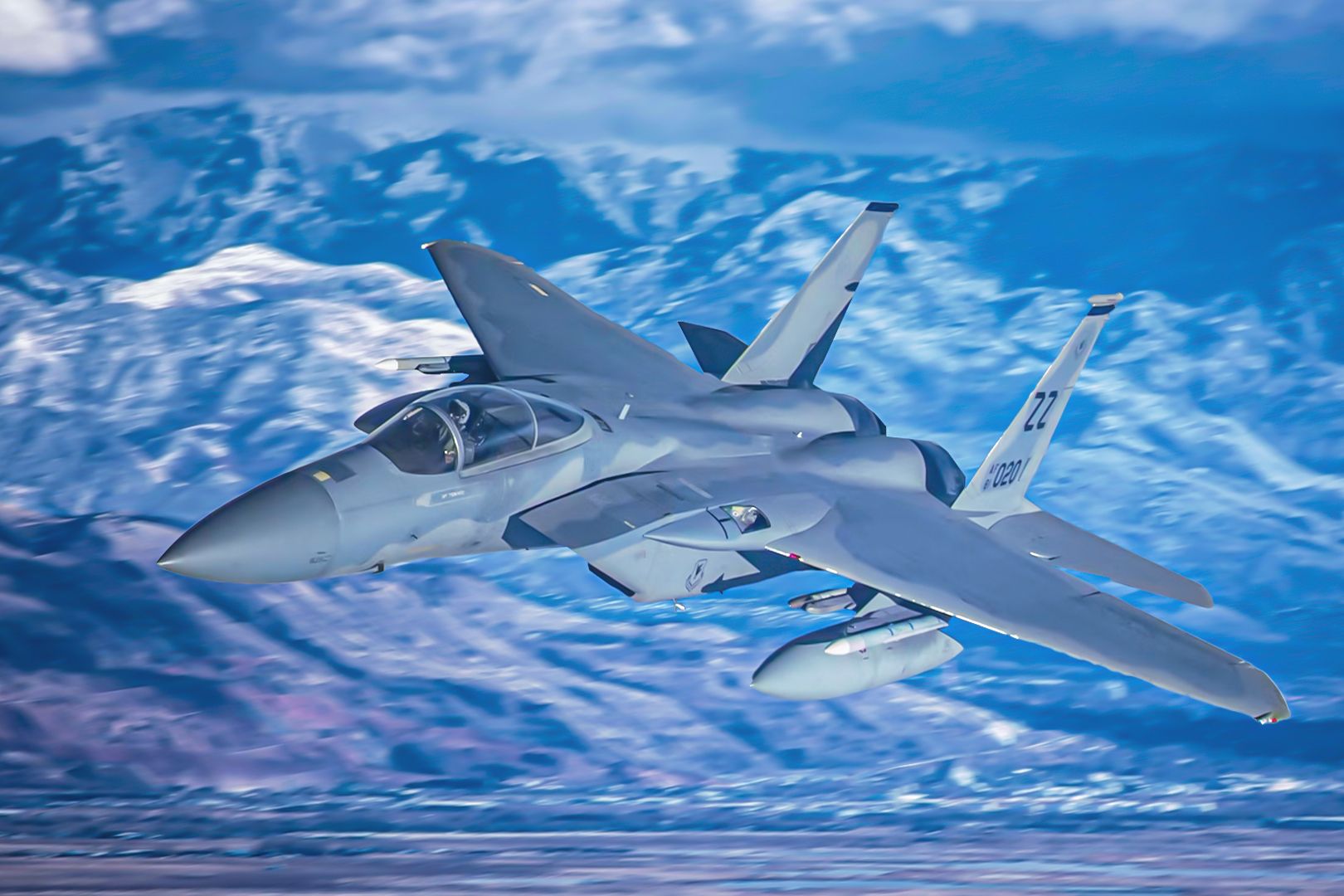
Related
5 Essential Features Of The USAF F-15 Eagle That Make It A Powerful Asset In Air Combat
5th Generation stealth fighters are all the rage nowadays, but the 4th Generation F-15 Eagle still soldiers on.
Five aircraft manufacturers submitted their proposals, which gained momentum after NATO allies Belgium, Denmark, the Netherlands, and Norway said they were looking for a lightweight fighter to replace their aging Lockheed F-104 Starfighters. On January 13, 1975, the YF-16, as it was called then, was announced as the winner.
Despite being named the “Fighting Falcon,” Air Force pilots and crews referred to the plane as a Viper because they thought it resembled a poisonous snake. Much smaller and lighter than any previous American fighter jet, the F-16 was the first fighter to use fly-by-wire technology that allowed it to do 9-g maneuvers purposely. Other innovations included advanced avionics and a bubble canopy to allow pilots 360-degree views. The General Dynamics F-16 Fighting Falcon entered service with the USAF on August 17, 1978.
Specifications and general characteristics of the General Dynamics F-16 Fighting Falcon
|
Crew |
1 |
|---|---|
|
Length |
49.5 feet |
|
Height |
16 feet |
|
Wingspan |
32 feet 8 inches |
|
Wing Area |
300 square feet |
|
Empty Weight |
18,900 lbs |
|
Gross Weight |
26,500 lbs |
|
MTOW |
42,300 lbs |
|
Fuel Capacity |
7,000 lbs |
|
Powerplant |
1 × General Electric F110-GE-129 for Block 50 aircraft and 1 x Pratt & Whitney F100-PW-229 for Block 52 aircraft |
Performance
|
Maximum Speed |
Mach 2.05 |
|---|---|
|
Combat Range |
339 miles |
|
Ferry Range |
2,620 miles |
|
Service Ceiling |
50,000 feet |
What are the main differences between the F-15 and F-16?
Photo: USAF
In summary, the F-15 was built for speed, and the F-16 was built for maneuverability. When the F-16 entered service with the USAF in 1978, it quickly became the aircraft against which all other jet fighters are measured. Despite being highly agile with exceptional aerodynamic performance, the F-16 is limited by its short combat range.
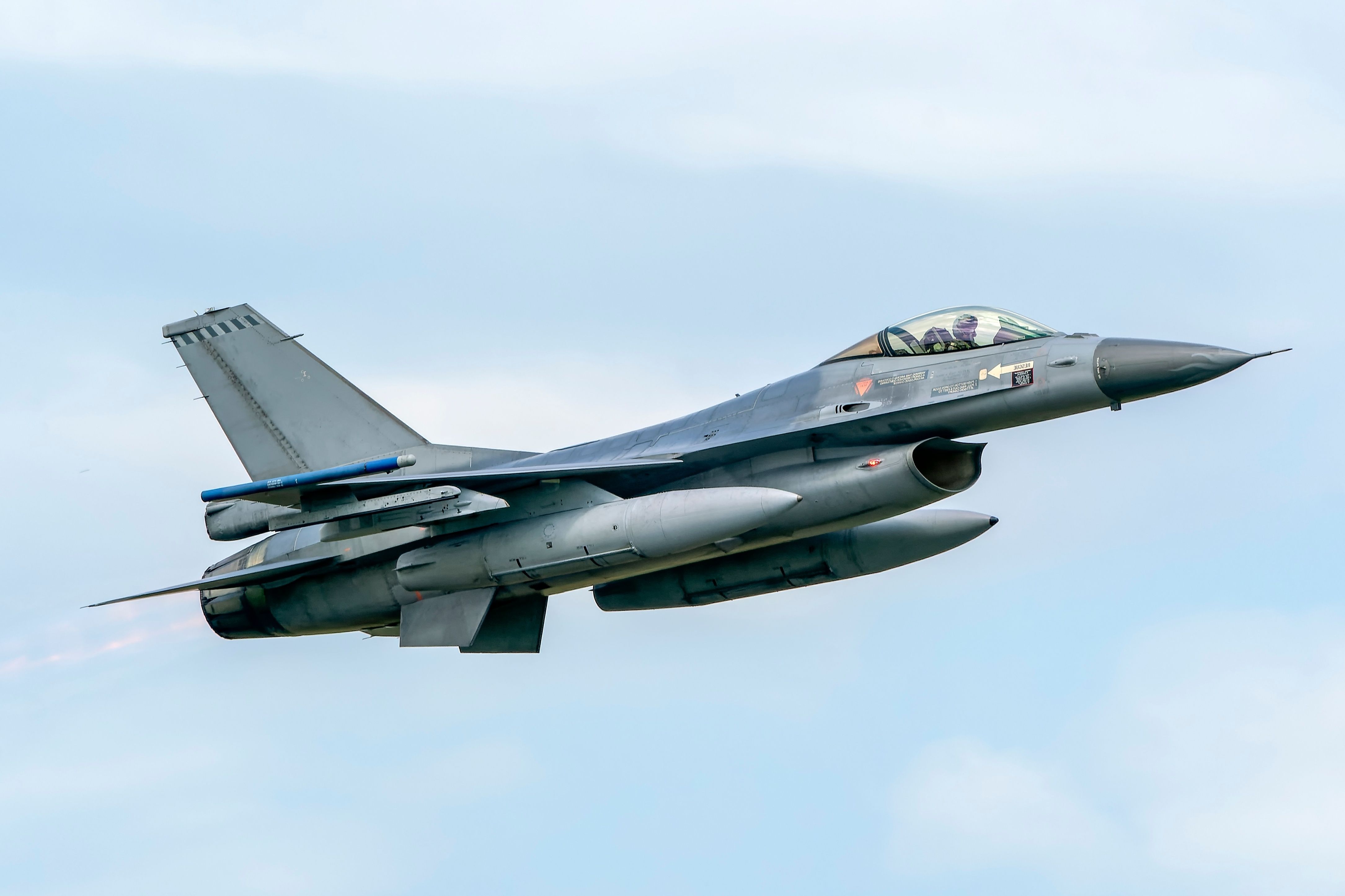
Related
US Announces Dutch & Danish Governments Will Send F-16s To Ukraine This Summer
More than 70 aircraft commitments are currently outstanding in F-16 donations to Ukraine.
Also, unlike the F-15, which has recorded over 100 kills and never lost a dogfight, the F-16 has yet to engage an enemy aircraft in combat. Having said that, things are about to change as the Ukrainian Air Force starts taking deliveries of F-16s donated by Belgium, Denmark, Norway, and the Netherlands.

